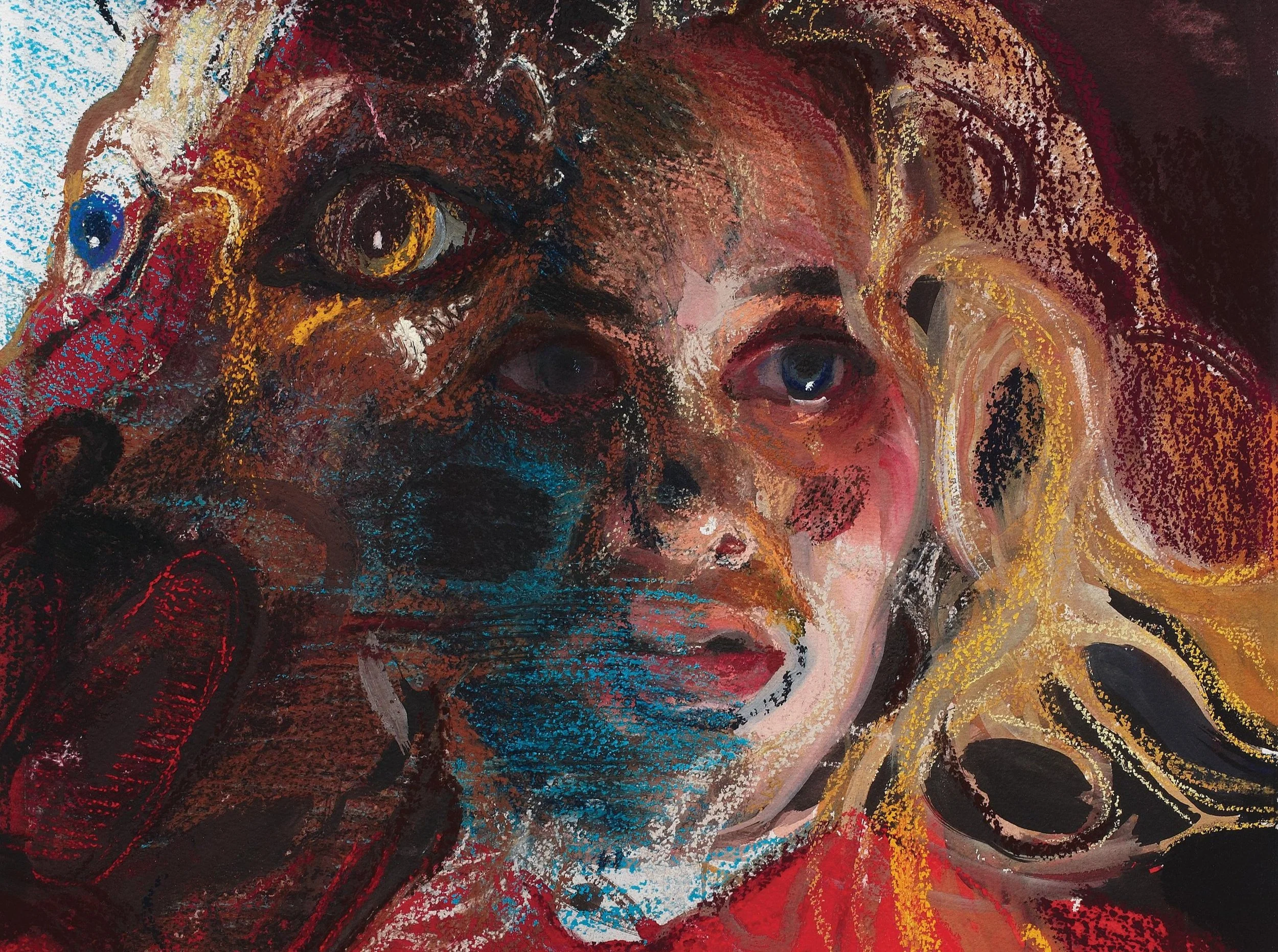
TALES OF THE BROTHERS GRIMM
Published between 1812 and 1857, the Grimm Brothers' fairy tales, including classics such as “Cinderella,” “Snow White,” and “Rapunzel,” are known and loved by children the world over. Lesser known is that these stories were intended for adults, with later editions expunged of sexuality and violence. Although gathered and adapted for print by the Brothers Grimm, these narratives initially were conceived of and shared largely by women.
Natalie Frank transforms the unsanitized versions of these tales into feminist images that elevate heroines and villainesses to celebrate female agency. She focuses on the overt sexuality, brutal violence, and extraordinary grotesqueries connected to women’s bodies in visual translations that are an archly feminist act. In 2015–16, these drawings were shown at The Drawing Center, New York; the Jack S. Blanton Museum of Art at the University of Texas at Austin; and the University of Kentucky Art Museum, Lexington.
Expanding on the history of illustrated books, figuration, and personal and political narrative, Frank’s drawings comprise the largest collection of the Brothers Grimm fairy tales ever portrayed by an artist. Her accompanying book, published by Damiani (2015) with revised translations by Jack Zipes, includes contributions from The Drawing Center Senior Curator Claire Gilman, Tony Award–winning director Julie Taymor, and distinguished feminist art historian Linda Nochlin. It is designed in by award-winning typographer Marian Bantjes.
In 2019, Ballet Austin commissioned the production of Grimm Tales, a full-length ballet based on Frank’s drawings.
75 gouache and chalk pastel drawings, 30 x 22”, 2011-5; Marginalia.
Exhibition: The Drawing Center, New York; the Jack S. Blanton Museum of Art at the University of Texas at Austin; and the University of Kentucky Art Museum, Lexington.
Book: Tales of the Brothers Grimm, Drawings by Natalie Frank. Translations and Introduction by Jack Zipes. Essays by Claire Gilman, Linda Nochlin, Julie Taymor. Designed by Marian Bantjes. Damiani, 2015




























